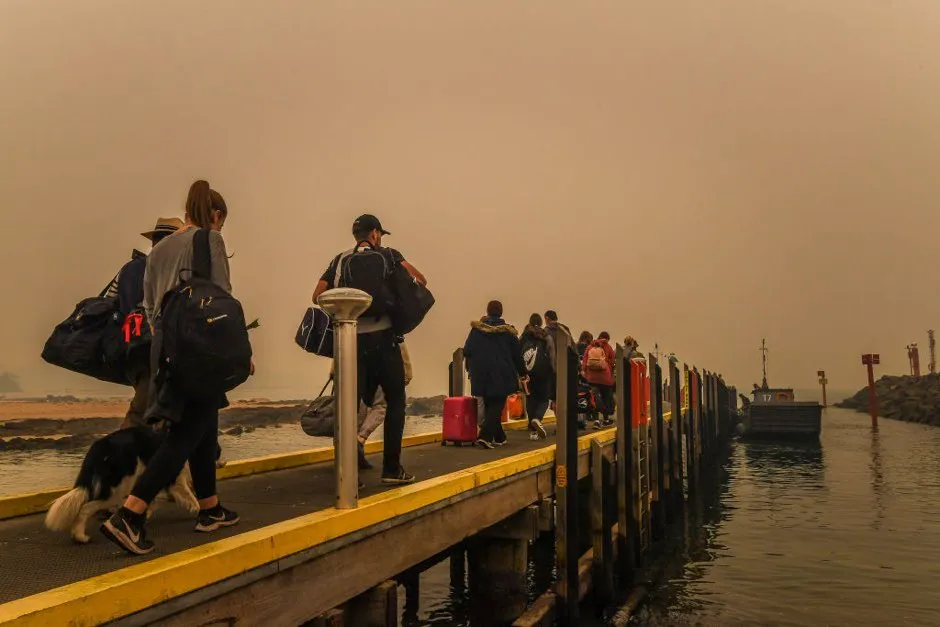On our overheating planet, wildfire is now one of the most terrifying and costly of all natural disasters. From California to Russia, Australia to the UK and Greenland to the Amazon, record temperatures and tinder box conditions have, in recent years, driven conflagrations that have taken hundreds of lives and immolated many thousands of properties – in some cases entire communities.
Two years ago, major burns in California resulted in the deadliest and most destructive wildfire season ever recorded, with more than eighty deaths and three-quarters of a million hectares scorched at a cost of US$12 billion. In 2019, it was the Brazilian Amazon that burned, helped by fires started deliberately by farmers and loggers.
This year, it is Australia's turn, with the most widespread bushfires on record continuing to spread devastation, death and despair. As of mid-January, a staggering and unprecedented eight and a half million hectares of bush and forest has been turned to ash – an area equal to the size of Austria – and the cost is set to rise above five billion Australian dollars with months of the fire season still to go.
There are other costs too. While the country's bush and eucalyptus forest is particularly resilient to fire and will soon recover, its fauna is not. The blazes may already have taken the lives of more than one billion animals, which could have a long-term impact on populations of at-risk koalas and other vulnerable species.
Read more about wildfires:
- Wildfire science: computer models, drones and laser scanning help fan the flames and prevent widespread devastation
- The Amazon rainforest: could it become a desert?
Looking at images and film of the Australian fires, it is easy to take away the impression that they are unstoppable; that nothing can be done to limit their scale and the destruction they bring, but this is not the case.
While battling great conflagrations once they are in full spate is almost a lost cause, measures can be taken in advance to try and manage the occurrence of fires and to limit their potential to grow into the colossal blazes that are near impossible to control.
What wildfire-prevention methods are there?
And such measures are nothing new. In fact, Australia's indigenous population has a long history of successfully managing fire across landscapes and ecologies that are tuned to living with it. For thousands of years, nomadic aboriginals played a key role in preventing conflagrations by burning surface vegetation to create firebreaks that constrained the scale of fires started naturally by lightning.
The fires were set during the cooler months, so as to limit their reach, leaving behind stretches of land cleared of the dry plant debris that fuels much larger conflagrations. As their numbers dwindled, however, and their lifestyle was destroyed, so too was this invaluable service.

Now, however, using such traditional practices to start so-called controlled or hazard reduction burns are being taken seriously by stakeholders in the fire management business. There have already been some small-scale successes in managing bushfire activity, most notably where traditional methods have been combined with modern technologies including satellite mapping and controlled aerial ignition using helicopters or drones.
And the ideas are catching on elsewhere too. In Venezuela, a combination of indigenous knowledge and modern techniques is being used to manage fires in the country's Canaima National Park, while methods and strategies implemented in Australia are being exported to places as far afield as Botswana, Brazil and Canada.
There are other things that can be done too, in order to clamp down on wildfires and their impacts. More sophisticated computer models are able to predict how a blaze will develop, allowing better planning of fire-fighting resources.
As urban centres expand into wildland areas where fires are more common, the interface between the two becomes a critical zone, where effective preventative strategies can help keep buildings safe.
These include maintaining a wide vegetation-free zone around properties, using fire-resistant building materials and keeping gutters and decking free of burnable debris. Injury and loss of life can be minimised by planning multiple evacuation routes in advance, and by ensuring that there is always good access for fire-fighting vehicles.
Will the prevention methods work?
Even taken together, however, such mitigation methods amount to little more than a collective sticking plaster.
Looking ahead, prospects in countries prone to burning look bleak. Even armed with new models and methodologies, in the continuing war against wildfires, it is likely that stakeholders will be battling just to stay still.
As global heating accelerates, unprecedented temperatures, extreme drought conditions, and failing water supplies will conspire to provide a perfect storm that will bring ever more devastating conflagrations.In Australia, 2019 was the hottest year on record and the driest for nearly 120 years.
Read more fromReality Check:
- Climate change: should we change the terminology?
- Smartphone apps: can they improve our mental health?
On top of this, December saw more than three-quarters of the country experiencing the worst fire weather conditions on record. As the conflagrations continue to rampage through fully grown forest as well as bush, it is worth noting that Australia is essentially a desert with a few green bits around the edge.
The bottom line is that it is hardly surprising that as conditions become hotter and drier, these bits become crisped and burned by heat and fire, leading to questions being asked about the country's long-term future on an overheated world.
Whisper it, but maybe – at long last – the recognition that the fate of Australia is at stake will knock some sense into the climate change deniers and obfuscators who govern the country, so that they begin, seriously to tackle emissions in line with what the science says is needed.
Visit the BBC's Reality Check website at bit.ly/reality_check_ or follow them on Twitter@BBCRealityCheck
